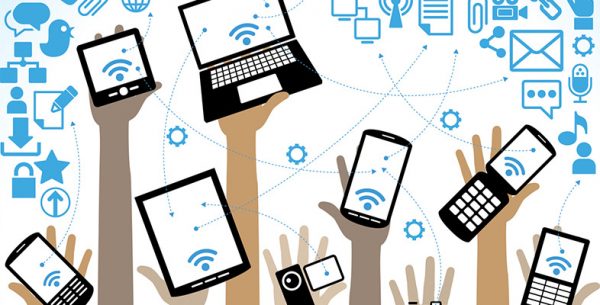Disability Assistive Technology
Key Facts
- Assistive technology is an umbrella term covering the systems and services related to the delivery of assistive products and services.
- Assistive products maintain or improve an individual’s functioning and independence, thereby promoting their well-being.
- Hearing aids, wheelchairs, communication aids, spectacles, prostheses, pill organizers and memory aids are all examples of assistive products.
- Globally, more than 1 billion people need 1 or more assistive products.
- With an ageing global population and a rise in noncommunicable diseases, more than 2 billion people will need at least 1 assistive product by 2030, with many older people needing 2 or more.
- Today, only 1 in 10 people in need have access to assistive products.

Assistive technology enables people to live healthy, productive, independent, and dignified lives, and to participate in education, the labour market and civic life. Assistive technology reduces the need for formal health and support services, long-term care and the work of caregivers. Without assistive technology, people are often excluded, isolated, and locked into poverty, thereby increasing the impact of disease and disability on a person, their family, and society.
Today, only 1 in 10 people in need have access to assistive technology due to high costs and a lack of awareness, availability, trained personnel, policy, and financing.
Who can benefit from assistive technology?
People who most need assistive technology include:
- people with disabilities
- older people
- people with noncommunicable diseases such as diabetes and stroke
- people with mental health conditions including dementia and autism
- people with gradual functional decline.
Health, well-being and socioeconomic benefits
Assistive technology can have a positive impact on the health and well-being of a person and their family, as well as broader socioeconomic benefits. For example:
- Proper use of hearing aids by young children leads to improved language skills, without which a person with hearing loss has severely limited opportunities for education and employment (1).
- Manual wheelchairs increase access to education and employment while reducing healthcare costs due to a reduction in the risk of pressure sores and contractures.
- Assistive technology can enable older people to continue to live at home and delay or prevent the need for long-term care (2).
- Therapeutic footwear for diabetes reduces the incidence of foot ulcers, preventing lower limb amputations and the associated burden on health systems (3).
Unmet global need for assistive technology
Across the globe, many people who need assistive technology do not have access to it. Examples of the unmet global need for assistive technology include:
- 200 million people with low vision who do not have access to assistive products for low-vision.
- 75 million people who need a wheelchair and only 5% to 15% of those in need who have access to one.
- 466 million people globally experience hearing loss. Hearing aid production currently meets less than 10% of the global need.
- Huge workforce shortages in assistive technology: over 75% of low-income countries have no prosthetic and orthotics training programmes. Countries with the highest prevalence of disability-related health conditions tend to be those with the lowest supply of health workers skilled in provision of assistive technology (as low as 2 professionals per 10 000 population) (4).
Lack of affordability in low-income countries is a major reason people in need do not possess assistive products (5).

Challenges
Policy
Very few countries have a national assistive technology policy or programme.
In many countries, access to assistive technology in the public sector is poor or non-existent. Even in high-income countries, assistive products are often rationed or not included within health and welfare schemes, leading to high out-of-pocket payments by users and their families.
For example, it is common policy in a number of European countries for the state to provide older people with only 1 hearing aid, despite the fact that most people with age related hearing loss require 2 hearing aids to function.
Products
The assistive products industry is currently limited and specialized, primarily serving high-income markets. There is a lack of state funding, nationwide service delivery systems, user-centred research and development, procurement systems, quality and safety standards, and context-appropriate product design.
Provision
In high-income countries services are often stand-alone and not integrated. People are forced to attend multiple appointments at different locations, which are costly and add to the burden on users as well as caregivers, and on health and welfare budgets.
In many low- and middle-income countries, national service delivery for assistive products does not exist. Those who can afford them buy assistive products direct from a pharmacy, private clinic, or workshop.
People from the poorer sectors of society must rely on erratic donations or charity services, which often focus on delivering large quantities of low-quality or used products. These are often not appropriate for the user or the context, and lack mechanisms for repair and follow up. A similar scenario is also common in emergency response programmes.
Personnel
Trained health personnel are essential for the proper prescription, fitting, user training, and follow-up of assistive products. Without these key steps, assistive products are often of no benefit or abandoned, and they may even cause physical harm (as is the case of providing wheelchairs without pressure relief cushions for people with spinal injury).
Assistive technology within universal health coverage
The 2030 Agenda for Sustainable Development places good health and well-being at the centre of a new development vision. It emphasizes universal health coverage (UHC) to ensure a sustainable development for all, so that everyone everywhere can access the health services needed without facing financial hardship.
Universal Health Coverage can be advanced inclusively only if people are able to access quality assistive products when and where they need them.
Addressing the unmet need of assistive products is crucial to achieve the Sustainable Development Goals, to provide UHC, and to implement the UN Convention on the Rights of Persons with Disabilities, ratified by 177 countries.
‘Leaving no one behind’ means ensuring the people with disabilities, the older population and those affected by chronic diseases are included in society and enabled to live a healthy and dignified life.
WHO response
WHO is coordinating the Global Cooperation on Assistive Technology (GATE), which exists to improve access to high-quality affordable assistive technology for everyone, everywhere. The GATE initiative is developing 4 practical tools to support countries to address the challenges described above.
WHO sees the GATE initiative as a concrete step towards realizing the goals of the UN Convention on the Rights of Persons with Disabilities, universal health coverage and the Sustainable Development Goals.
The GATE initiative will reinforce WHO’s global strategy on people-centred and integrated health services across the lifespan, as well as action plans on noncommunicable diseases, ageing and health, disability and mental health.
- (1) Global burden of childhood hearing impairment and disease control priorities for developing countries.
Olusanya BO, Newton VE. Lancet. 2007 Apr 14;369(9569):1314-7. - (2) Can adapting the homes of older people and providing assistive technology pay its way?
Lansley P, McCreadie C, Tinker A. Age Ageing. 2004 Nov;33(6):571-6. Epub 2004 Sep 3.3 - (3) Footwear and offloading interventions to prevent and heal foot ulcers and reduce plantar pressure in patients with diabetes: a systematic review.
Bus SA, van Deursen RW, Armstrong DG, Lewis J, Caravaggi CF, Cavanagh PR. International Working Group on the Diabetic Foot. - (4) Health-related rehabilitation services: assessing the global supply of and need for human resources.
Gupta N, Castillo-Laborde C, Landry MD. BMC Health Services Research 2011, 11:276. - (5) Users’ perspectives on the provision of assistive technologies in Bangladesh: awareness, providers, costs and barriers.
Borg J, Ostergren P. Disabil Rehabil Assist Technol. 2015 Jul;10(4):301-8. doi: 10.3109/17483107.2014.974221. Epub 2014 Oct 27.
Recent Comments